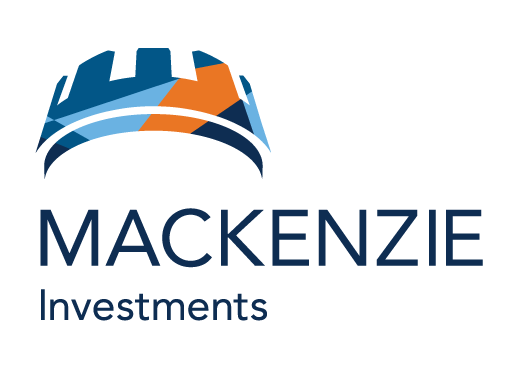Jun 16, 2022
Dividends: back in style
Presented by:


The first half of 2022 has been, to put it lightly, unkind to equity investors. By now, many have realized that the portfolio that worked going into the pandemic may not work coming out of it.
Over the past decade, markets were led by high-growth businesses, many of which relied on debt to fund expansion. But as inflation soared in the first quarter, central banks raised policy rates, sending the cost of debt higher.
As investors reconstruct their portfolios to reflect the economic recalibration taking place, they may consider a return to an investment style that has a long track record of success in a higher rate environment.
“It's such an unpredictable moment right now in the markets,” says Darren McKiernan, Head of the Mackenzie Global Equity and Income Team and the lead manager of the Mackenzie Global Dividend Fund. “As you're reconstructing portfolios, a focus on quality is highly recommended.”
His team, which includes portfolio managers Katherine Owen and Ome Saidi, is style agnostic in terms of the growth-value spectrum. The overarching goal is to find high-quality businesses with the free cash flow to support a healthy dividend.
“Of course, not all dividends are created equal,” says Owen. “We focus on the sustainability of the dividend because that's really what's crucial to long-term returns. That means investing in high-quality companies that generate high cash flow that can cover the dividends.”
An active advantage
While the team targets a yield that is higher than their benchmark, they point out that a high yield can be a red flag regarding the quality of the company. Typically, these high yields are the result of the inverse relationship between yield and price and suggest that the market anticipates a dividend cut.
It is therefore important to understand the underlying business, which requires in-depth research.
“We operate from a ‘dream team’ list of companies that has been curated for quality” says Saidi. “Before we even look at a high-yielding dividend, we already know if there are any issues with the business.
“The companies we’re looking at have very high returns on capital and are very well run. They're some of the best in the world, so within this dream team, extremely high yields tend to be uncommon.”
Yet, occasionally even these dream team members offer a high yield due to short-term issues, such as temporarily depressed earnings. Such a situation arose in 2020, when the markets sold off heavily in the face of COVID-19 pandemic measures.
Some companies on their watch list declined enough that their yields spiked to above 6%. This presented the team with the opportunity to buy the high-quality companies they seek at a discount, and lock in an uncommonly higher yield.
One of these was pharmaceutical giant AbbVie, which faced substantial patent expirations. Even prior to the sell-off, the team’s research provided insight into the underlying strength of the business.
“We’re always forward-looking and we were confident that these companies would see an earnings recovery,” says Owen. “We were confident in the sustainability of AbbVie’s earnings due to new products that were going to replace the drug that was going off-patent.”
The growth cycle
Depending on where a company is its growth cycle, dividends can make more, or less, sense. A company like Microsoft has ample opportunities to reinvest in its business and create even stronger cash flows, as it is doing with its cloud computing division, Azure.
“They're spending a ton of money on Azure, building it from nothing to a multi-billion service,” says McKiernan. “The addressable market is still massive. I don't want Microsoft announcing a 50% payout ratio.”
He points to Visa as an example of a company that should raise its payout ratio, as it dominates the payments market and generates far more cash than it needs to reinvest in the business. Its 25% payout ratio could be raised to 35% to 40% without harming the underlying business, he says.
It’s the combination of higher pay-out and higher growth companies that creates a more durable portfolio.
Mean reversion
Historically, reinvested dividends have accounted for between 40% and 50% of total returns in the US equity markets, and an even more prominent amount in international markets. Over the past decade, that slipped to just 15%, as high-growth multiple expansion ballooned to account for roughly two-thirds of total returns.
“If the world goes back to the long-term averages, as a dividend-focused investor, you're probably in pretty good shape,” says McKiernan. “We like those odds.”
Disclaimer
Commissions, trailing commissions, management fees and expenses all may be associated with mutual fund investments. Please read the prospectus before investing. Mutual funds are not guaranteed, their values change frequently and past performance may not be repeated.
The content of this article (including facts, views, opinions, recommendations, descriptions of or references to, products or securities) is not to be used or construed as investment advice, as an offer to sell or the solicitation of an offer to buy, or an endorsement, recommendation or sponsorship of any entity or security cited. Although we endeavour to ensure its accuracy and completeness, we assume no responsibility for any reliance upon it.
This article may contain forward-looking information which reflect our or third party current expectations or forecasts of future events. Forward-looking information is inherently subject to, among other things, risks, uncertainties and assumptions that could cause actual results to differ materially from those expressed herein. These risks, uncertainties and assumptions include, without limitation, general economic, political and market factors, interest and foreign exchange rates, the volatility of equity and capital markets, business competition, technological change, changes in government regulations, changes in tax laws, unexpected judicial or regulatory proceedings and catastrophic events. Please consider these and other factors carefully and not place undue reliance on forward-looking information. The forward-looking information contained herein is current only as of June 3, 2022. There should be no expectation that such information will in all circumstances be updated, supplemented or revised whether as a result of new information, changing circumstances, future events or otherwise.